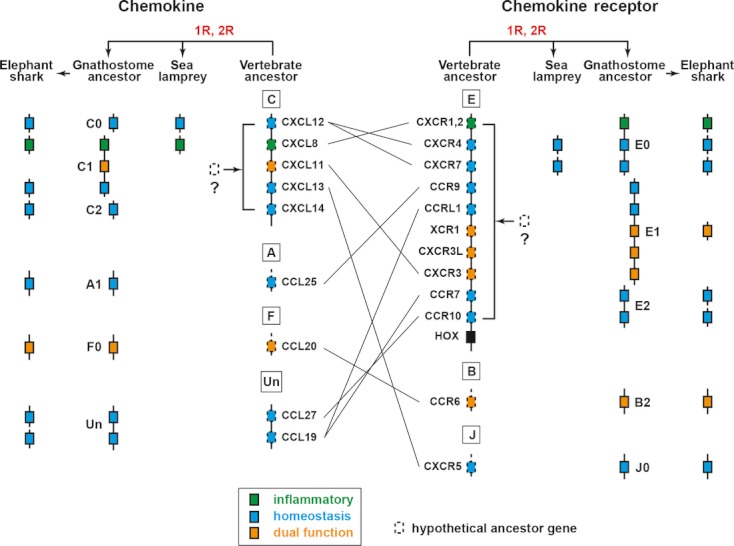Figure 5
Vertebrate ancestral genes for chemokines and chemokine receptors. The vertebrate and gnathostome protochromosomes on which chemokine and chemokine receptor genes were localized are shown. Among the genes contained by sea lamprey and elephant shark, only those that are shared by vertebrate or gnathostome ancestors are shown. Because the genome sequences of sea lamprey and elephant shark are still fragmented, it is not known whether the genes are linked on the same chromosomes. The lines that link the vertebrate chemokine ancestors with the chemokine receptor ancestors indicate the ligand–receptor relationships based on the human chemokine system. The receptor for

